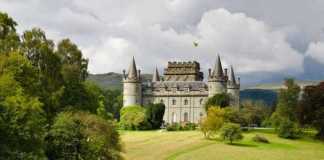Vietnam has a wealth of history and culture, with many locations to visit and exquisite Vietnamese cuisine influenced by the French who also endowned the country with colonial architecture. Each region has its own subculture, delicacy and vibe to experience. The people are energetic, friendly and vibrant adding to the kaleidoscope of colour and culture. What is Vietnam known for? Places that immediately pop into mind are Hanoi, Ho Chi Minh City and Halong Bay. From citadels and pagodas to beaches and islands, here’s what Vietnam is famous for.
Contents
- What Is Vietnam Known For?
- 1- Ha Long Bay
- 2- The War History In Vietnam
- 3- French Colonial Architecture
- 4- Vietnamese Cuisine
- 5- UNESCO World Heritage Sites
- 6- Historical Citadels
- 7- The Mekong Delta
- 8- Motorbike Culture
- 9- The Capital Of Hanoi
- 10- The Cosmopolitan City Of Ho Chi Minh City
- 11- Beach Life
- 12- Handcrafted Items And Villages
- 13- Sapa Village
- 14- Pagodas
- 15- Tet Nguyen Dan (Vietnamese New Year)
What Is Vietnam Known For?
Discover the enchanting beauty of Vietnam without the hassle of planning! If you’re short on time or just don’t feel like diving into the detail, a professionally organised tour is the perfect solution. Immerse yourself in the rich culture, stunning landscapes and vibrant cities of Vietnam with expert guides who will take care of everything. From the bustling streets of Hanoi to the serene waters of Ha Long Bay, let Luxury Escapes create an unforgettable experience for you. Find out how to have a hassle-free adventure in Vietnam today while exploring this incredible country in comfort.
1- Ha Long Bay
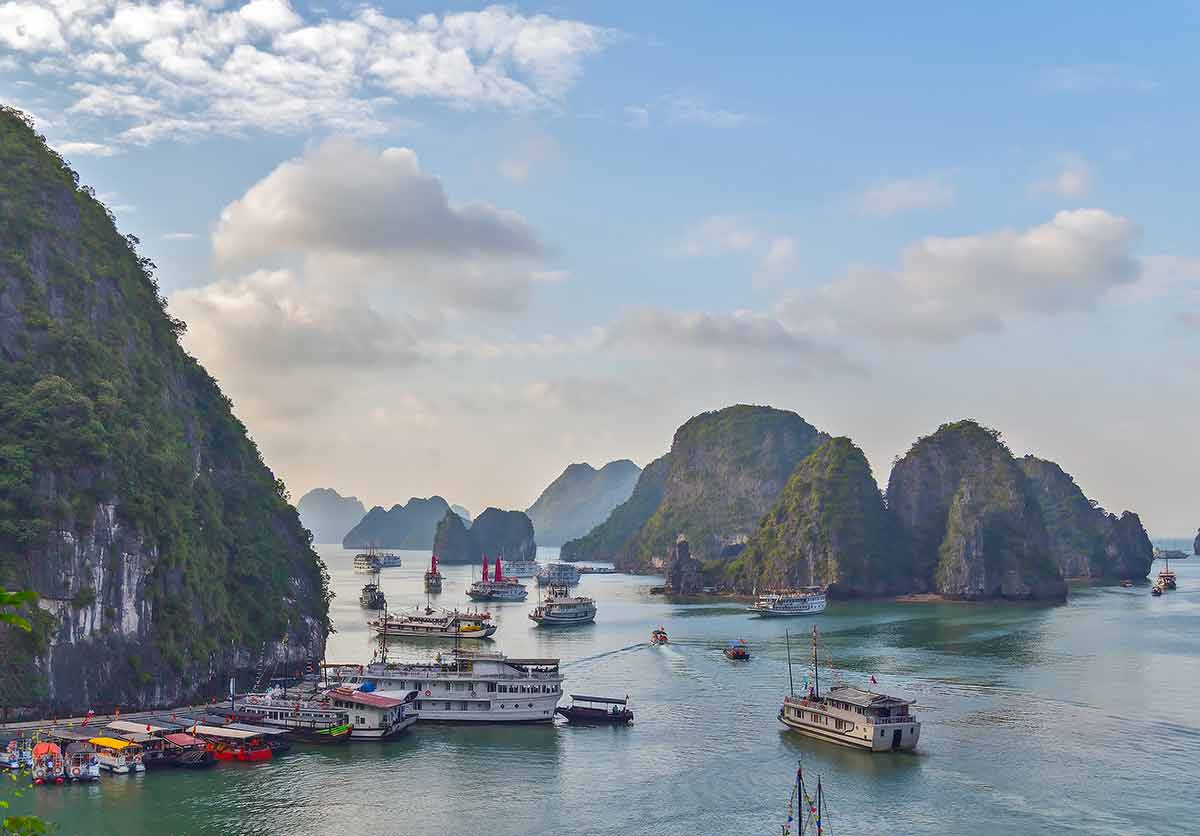
About 107 miles (172 km) from the capital of Hanoi in the northeast region of Vietnam, Ha Long Bay is a massive bay that’s around 600 square miles (1,554 square kilometers).
The UNESCO World Heritage Site consists of around 1,600 islands that mostly are uninhabited and not compromised by the encroachment of humans, except for a few fishing villages.
This region has massive pillars made of limestone with greenery growing on top of them.
It is also home to some historical ancient cultures such as the Soi Nhụ and the Hạ Long people, that date back all the way to 18,000 and 5,000 years ago respectively.
Throughout the numerous caves and places that are scattered throughout the bay, you can get a glimpse of ancient history of the Vietnamese as many artifacts have been found as well as remains.
There is also a fishing community that lives on the bay in floating villages.
Recommended tours:
- Hanoi: 1-Day Ha Long Bay Cruise – with Titop Island and Luon Cave
- Hanoi: 2-Day Halong/Lan Ha Bay – 5-Star Cruise with Balcony Cabin
- Hanoi: Islands, Caves, Kayak – plus Halong Dragonfly Boat Cruise
2- The War History In Vietnam
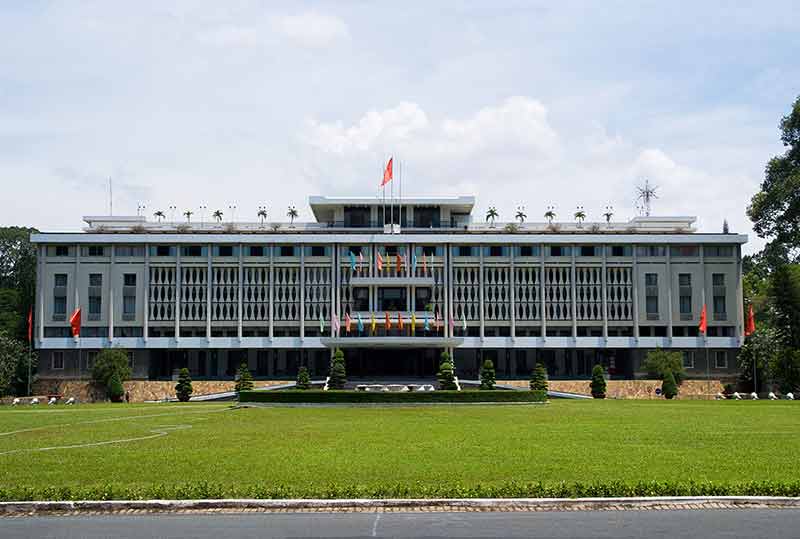
The Vietnam War contributed towards shaping a part of the identity of Vietnam in modern times.
Vietnam has many historic sites that showcase the war as a way for future generations to remember those turbulent times.
One of these places is the Cu Chi tunnels, which is northwest from Ho Chi Minh City.
This 75 mile (121 km) network of tunnels were a part of the thousands of miles of underground tunnels constructed initially by hand in the 1940s.
As the war progressed, these tunnels became underground villages used by the Viet Cong to combat a superior force by setting traps and sneak attacks, such as the Tet Offensive.
Independence Hall that was constructed in 1962 and home of the then Republic of Vietnam.
When a North Vietnamese Tank crashed the front gates, it effectively ended the war on April 30th, 1975.
A few months later, the country reunited and the place was renamed the Reunification Hall.
The Reunification Hall is at Ben Thanh, District 1, Ho Chi Minh City, Vietnam.
Recommended tours:
- HCM: War Remnants Museum & Independence Palace Walking Tour
- Ho Chi Minh: Guided Walking Tour with War Remnants Museum
- Ho Chi Minh: Full-Day Cu Chi Tunnels and Mekong Delta Tour
3- French Colonial Architecture
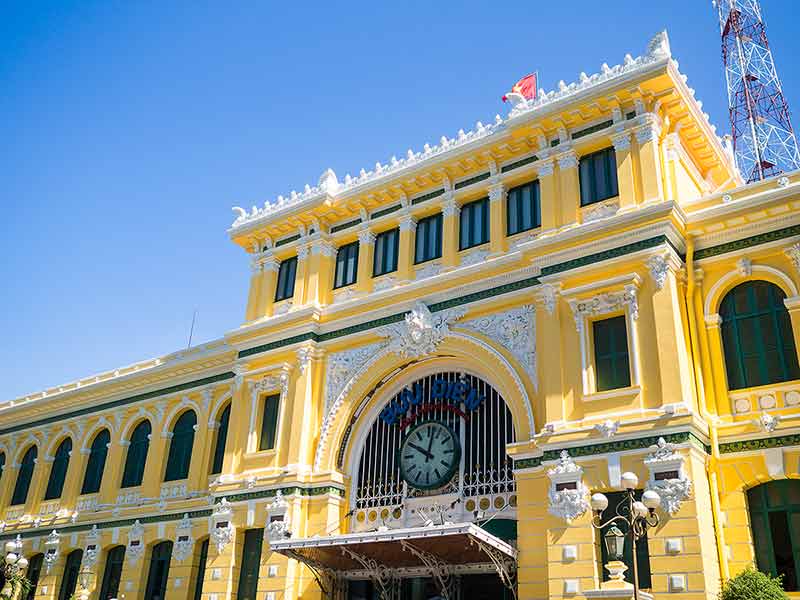
Wander around Ho Chi Minh City centre and you’ll see some beautiful buildings you’d expect to see in Europe, such as Notre Dame Cathedral.
The architectural style is a legacy of the French who ruled Vietnam during the colonial period and can be seen in several Vietnamese cities.
The Cathedral looks very similar to the one that can be seen in Paris and right next to it is the Central Post Office which also has similar architectural components and a great place to head inside and step back in time.
Both Hanoi and Ho Chi Minh City have Opera Houses that have the similar French inspired neoclassic look to them.
Both were constructed in the late 19th century, and are still active locations as well, offering local performing arts and theatre.
There are numerous examples that showcase the beautiful architecture and the Vietnamese have incorporated this period into their culture naturally.
Notre Dame Cathedral is at 01 Công xã Paris, Bến Nghé, Distrcit 1, Thành phố Hồ Chí Minh 70000, Vietnam
Central Post Office is at 02 Công xã Paris, Bến Nghé, District 1, Thành phố Hồ Chí Minh 70000, Vietnam
Ho Chi Minh Opera House is at 07 Công trường Lam Sơn, Bến Nghé, Quận 1, Thành phố Hồ Chí Minh 710212, Vietnam
Hanoi Opera House is at 1 Tràng Tiền, Phan Chu Trinh, Hoàn Kiếm, Hà Nội, Vietnam
4- Vietnamese Cuisine
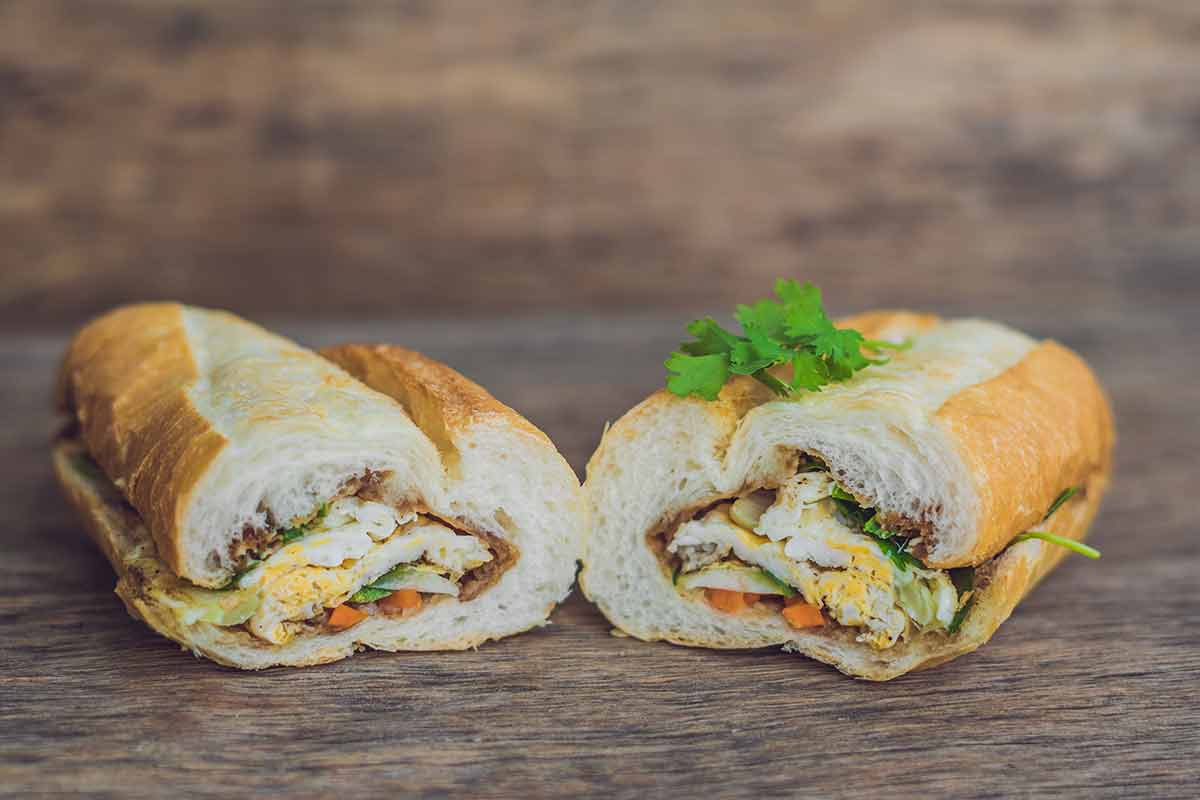
Not only is authentic Vietnamese food some of the freshest and tastiest food, the fusion cuisine in Vietnam is amazing.
Take for example the famous Pho which is a fragrant bowl of soup with chunks of meat in it.
They come in different varieties and can be found easily just by exploring Vietnam.
Banh Mi also has some influence from the French with the use of a freshly baked French baguette and fresh local Vietnamese flavors as fillings.
You’ll see food vendors hawking these as a breakfast and lunchtime.
It doesn’t stop there with Banh Xeo, a Vietnamese crepe or pancake that is savoury and can be made in different variations as well, really focusing on what’s fresh and available.
Vietnamese coffee or Ca Phe is one of the most flavourful and powerful types of coffee.
Of course you can have it black or get some of their unique variations such as egg coffee which combines the coffee with condensed milk, egg, sugar making for a delicious and frothy cup.
Recommended tour: Hanoi: Vegan Vietnamese Cooking Class in a Local Villa
5- UNESCO World Heritage Sites
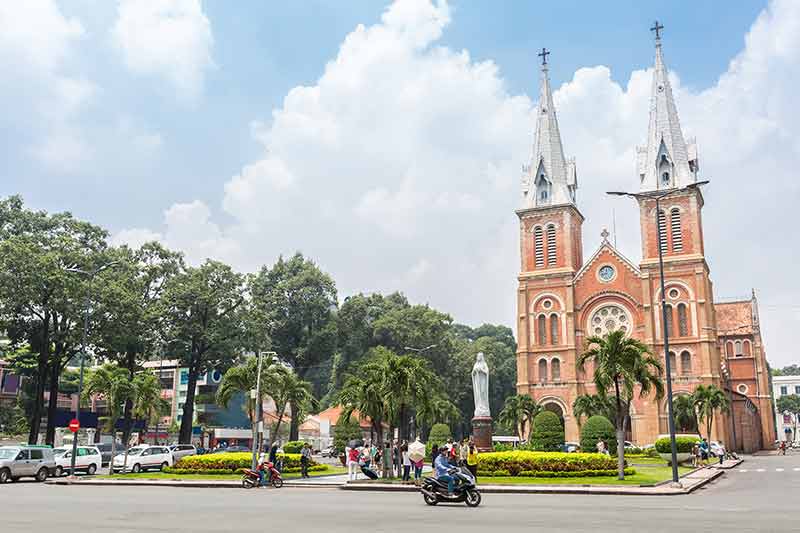
Vietnam is host to at least eight different World Heritage Sites which are a blend of both natural and cultural additions.
This includes the village of Hoi An which has been preserved quite well to resemble the traditional trading port and a place of commerce for hundreds of years.
There is also the Phong Ma village which still feels as if it hasn’t been fully explored yet and has those immense caverns that have formed over millions of years.
My Son Sanctuary is yet another cultural site that was built over a period of several hundred years in central Vietnam.
It includes multiple temples in different states for the Hindu religion built by the Champa people and it was their capital as well.
Or you can also see Trang An which was considered one of the earliest moments of civilization for the Vietnamese people and was the home of the Hoa Lu people a thousand years ago.
It also showed how early civilizations integrated with the natural lush areas.
For more things to do in Vietnam, read:
- 20 Things To Do In Ho Chi Minh City
- 15 Things To Do In Hanoi
- 15 Things To Do In Hoi An
- 20 Things To Do In Hue
- Vung Tau Travel Guide
- Vietnam River Cruise
- Hanoi vs Ho Chi Minh City
- 20 Beaches In Vietnam
- 20 Vietnam Cities
- Where To Stay In Hanoi
- Where To Stay In Ho Chi Minh City
- Where To Stay In Hoi An
- 20 Things To Do In Phu Quoc
- 20 Things To Do In Nha Trang
- 20 Islands In Vietnam
- 20 Things To Do In Danang
- 20 Things To Do In Dalat
- 20 Things To Do In Sapa
- Everything You Need To Know About Living In Vietnam
- 15 Things Vietnam Is Famous For
- 20 Beachfront Villas and Overwater Bungalows in Vietnam
6- Historical Citadels
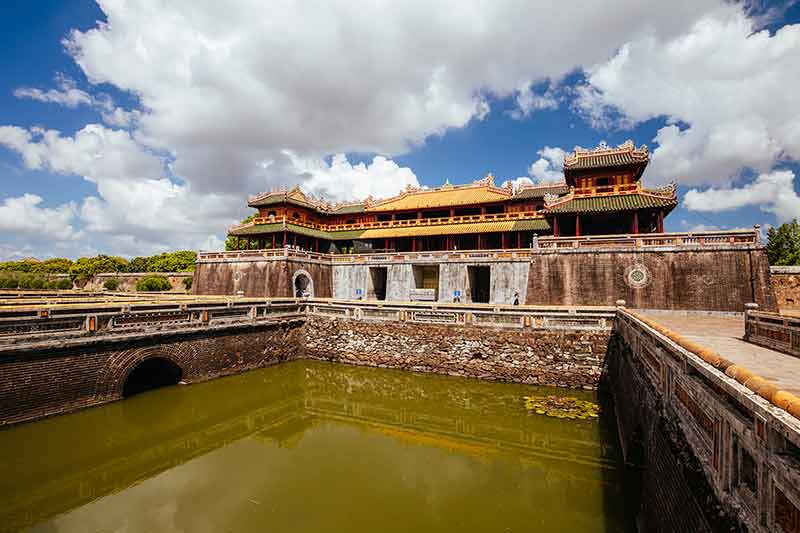
Vietnam was host to royal dynasties through its storied history and that’s why there are citadels that were a representation of the power and the influence of the ruling powers of the past.
The three mentioned below are also all part of the UNESCO World Heritage Sites list.
The Citadel of the Ho Dynasty was a modern fortress at the time it was built in the late 1300s.
Its inner construction showed early signs of new and modern techniques in architecture.
The Imperial Citadel in Hanoi was built in the 11th century on the remains of an older Chinese fortress.
It signified the independence of the Ly Viet people and its usage and influence lasted over a thousand years.
Another significant citadel is the Old Capital of Hue, which was built by the Nguyen Dynasty (the last dynasty of Vietnam) at the turn of the 19th century.
7- The Mekong Delta
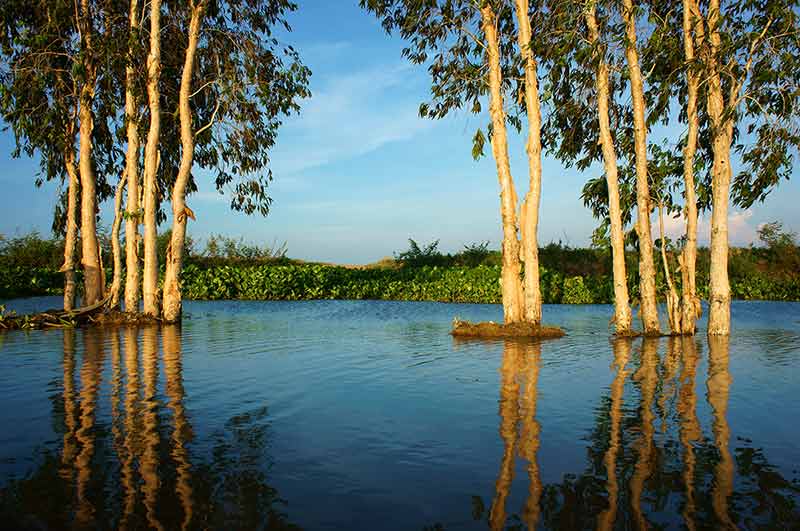
The Mekong Delta is the natural exit point of the Mekong River and plays a huge part in the aquaculture of Vietnam.
It is a major source of agriculture and a food source for the nation.
It’s not surprising that this was one of the earliest inhabited parts of the region because of the abundance of food.
When it’s not producing fresh food for the nation, it also provides natural protection against the elements, protecting those that live along the coastal regions.
It’s the third-largest delta in the world, and is an amalgamation of waterways, islands, as well as having a rich cultural history that can still be seen today.
It is a place that shows the earliest moments of Vietnam’s history which is well preserved in the area.
8- Motorbike Culture
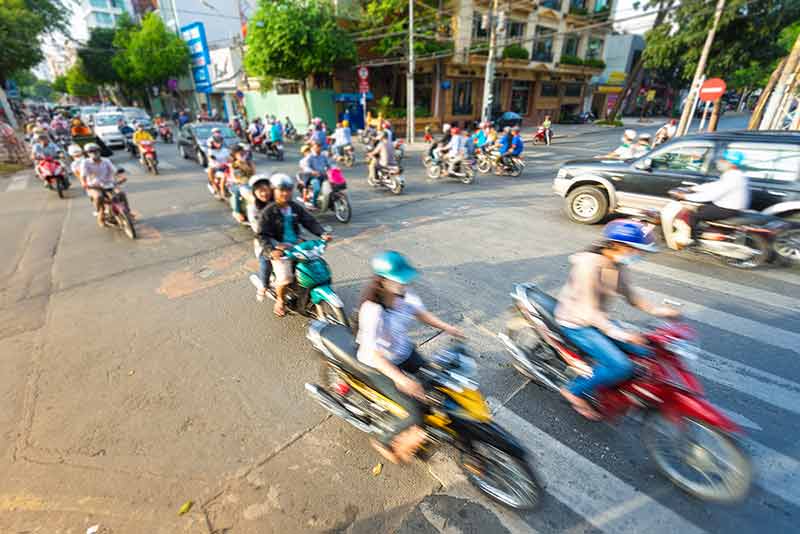
The motorbike culture in Vietnam is incredible to experience. Almost everyone uses a motorbike to get themselves from point to point.
The roads may seem rather hectic but you’ll soon realise it’s a controlled chaos.
Green light means go, so does yellow and more often than not red light means go as well!
Around two thirds of the population in Vietnam has a registered motorbike and one of the iconic experiences is to walk through an ocean of motorbikes.
It can be daunting at first to try to cross a street with a swarm of motorbikes coming in at all directions, but for the not-so-faint-at-heart, it can be a unique experience, and the motorbikes will move out of the way to avoid you!
Look out for a mind-boggling array of sights, such as modified bikes that serve food or deliver massive packages.
Entire families of four to five people often ride on one motorcycle, or you might even spot a dog or two cruising around with their owner.
The Vietnamese even use the bikes as their sleeping space to catch a few winks. Imagine that!
9- The Capital Of Hanoi
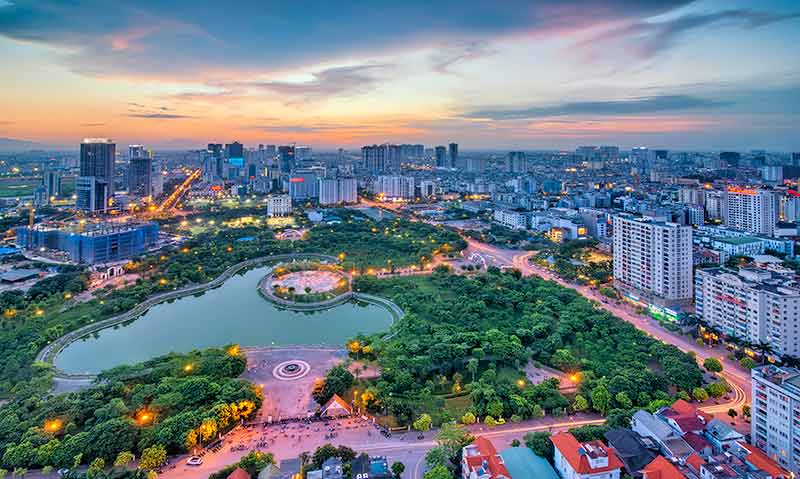
The ancient capital can appear to be a dichotomy at times.
On one end you will see food stalls around every possible corner, near ancient pagodas and temples that tell the long storied history of Vietnam, while on the other side you see massive skyscrapers showcasing the modern aspects of the country.
Expect these scenes to continue when you head back into the past in the Old Quarter which is a weaving tapestry of streets that are lined with old craftspeople.
As with any old city there are places of escape, such as Hoan Kiem Lake to relax the day away.
Hanoi is an intriguing blend of ancient past combined with the amenities of technology.
There’s also a place to remember its colonial past where the architecture has been fused with other styles.
Since it’s in the north it also comes with four seasons which is vastly different from other parts of Vietnam.
Recommended tour: Hanoi: Full-Day City Tour and Water Puppet Show
10- The Cosmopolitan City Of Ho Chi Minh City
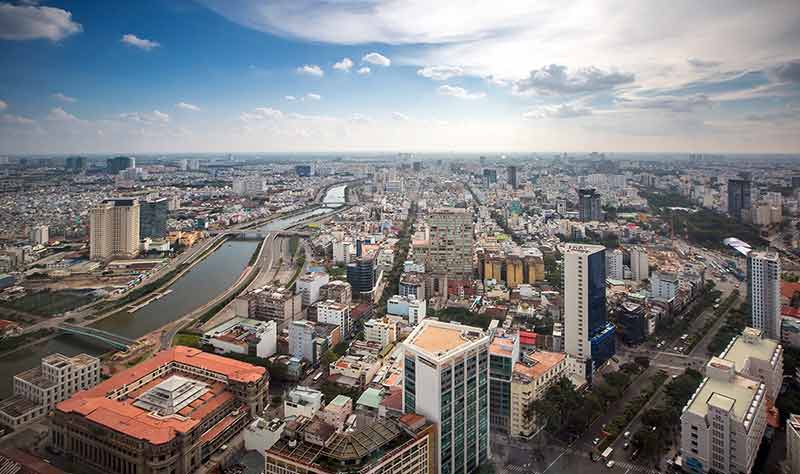
Sometimes referred to as Saigon still by the locals, Ho Chi Minh City is often confused as the capital.
One of the main differences between Hanoi and Ho Chi Minh is the latter has a tropical climate with two seasons, dry and wet season.
It’s a place that is a proper melting pot of many cultures and has a massive expat scene as well.
Food is a highlight in HCMC and there are delicious local options around every corner, as well as fusion fine dining menus.
There’s also a wealth of westernised establishments so for those that relocate here, it can start to feel like home very quickly.
It’s also known for being a more open place when it comes to the partying and nightlife.
Expect to see rooftop bars everywhere and clubs for those that want to keep the party going into the early hours of the morning.
It’s also a huge business city to rival Hanoi in economic growth.
Recommended tour: Saigon: Hop-on Hop-off Bus Tour
11- Beach Life
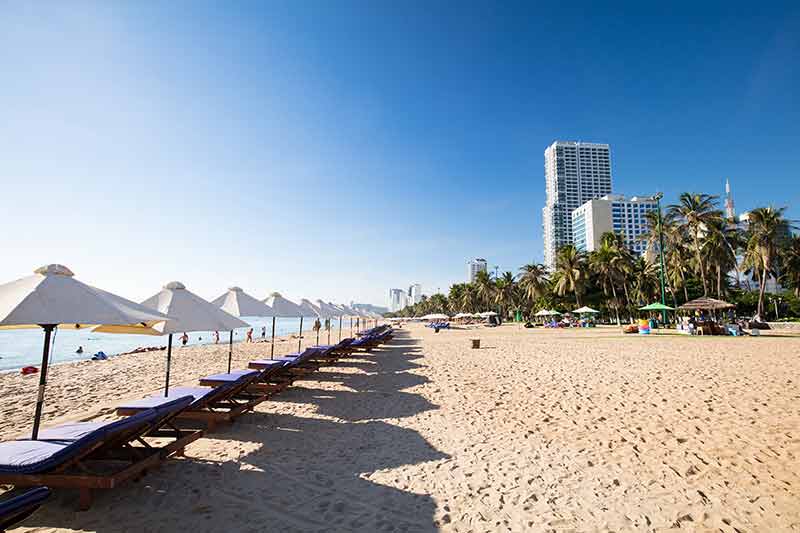
When it’s time to get away from the crazy cities, there isn’t a beach that’s too far away from any point in Vietnam.
That’s why the country’s beaches are so popular for anyone looking to catch some sun or waves.
Head out to popular locations such as Nha Trang, which has a rustic feel, pristine blue waters and plenty of islands to explore.
Head out for some surfing at Da Nang, which has nearly 19 miles (30km) of beach to explore and enjoy!
Towards the south there’s also Phu Quoc, which is an island that’s actually in the Gulf of Thailand and closer to Cambodia than mainland Vietnam.
It’s becoming a destination with a luxury vibe and over a dozen beaches to enjoy.
Recommended tours:
- Nha Trang: Coral Reef Snorkeling and Floating Bar Party
- From Da Nang: Snorkeling & Island Hopping Tour by Speedboat
12- Handcrafted Items And Villages
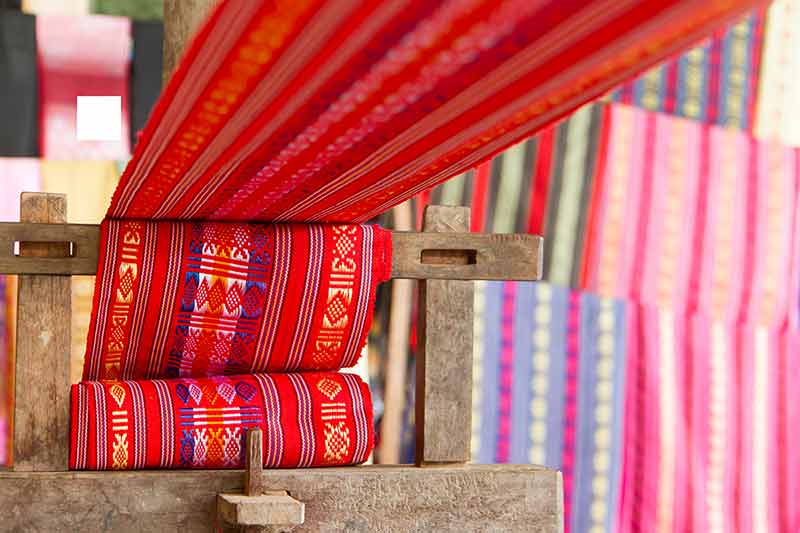
Vietnam is well setup for production, and many of the world’s big brands have factories in Vietnam.
Producing silk and pottery is a legacy of Vietnam’s culture.
Just south of Hanoi is Van Phuc Silk Village, which is famous for its silk weaving since ancient times.
There’s a village that has natural clay deposits called Bat Tran Ceramic Village, creating pottery that’s exquisite.
Other craft villages are Quang Phu Cau Incense Village, where you can see and buy beautiful smelling incense options, and Kieu Ky for its gold beating and creating refined goldleaf to place on statues of Buddha and other parts of the temples.
Recommended tours:
- Hanoi: Craft Village Tour with Free Private Tour Guide
- Bat Trang Pottery ancient village by Motorbike
- From Hanoi: Incense Village and Train Street Guided Tour
13- Sapa Village
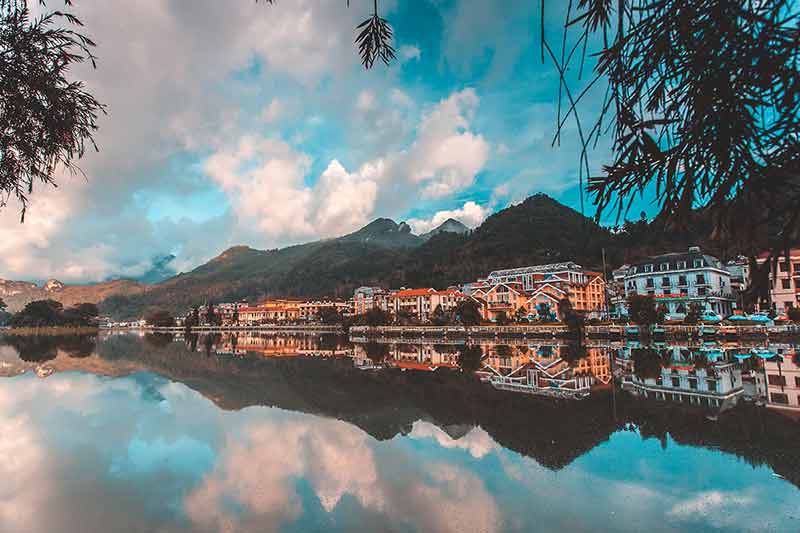
In the north of Hanoi lies Sapa Village in a mountainous region that is often covered by mist.
The scenery of rice paddies interconnected with nature is stunning.
Influences of French colonialism add a dash of charm to this ancient town but what makes it truly remarkable is that it is a connecting point of numerous ethnicities and cultures living in the surrounding area.
Whether it’s delving deeper into the culture of the Hmong people or exploring the traditions and customs of the Black Dao, there is a rich history that is unique to Vietnam.
It’s a starting place to be able to go further into the area to even more remote villages that help to weave the mosaic of the ancient history of empires all the way through modern times.
14- Pagodas
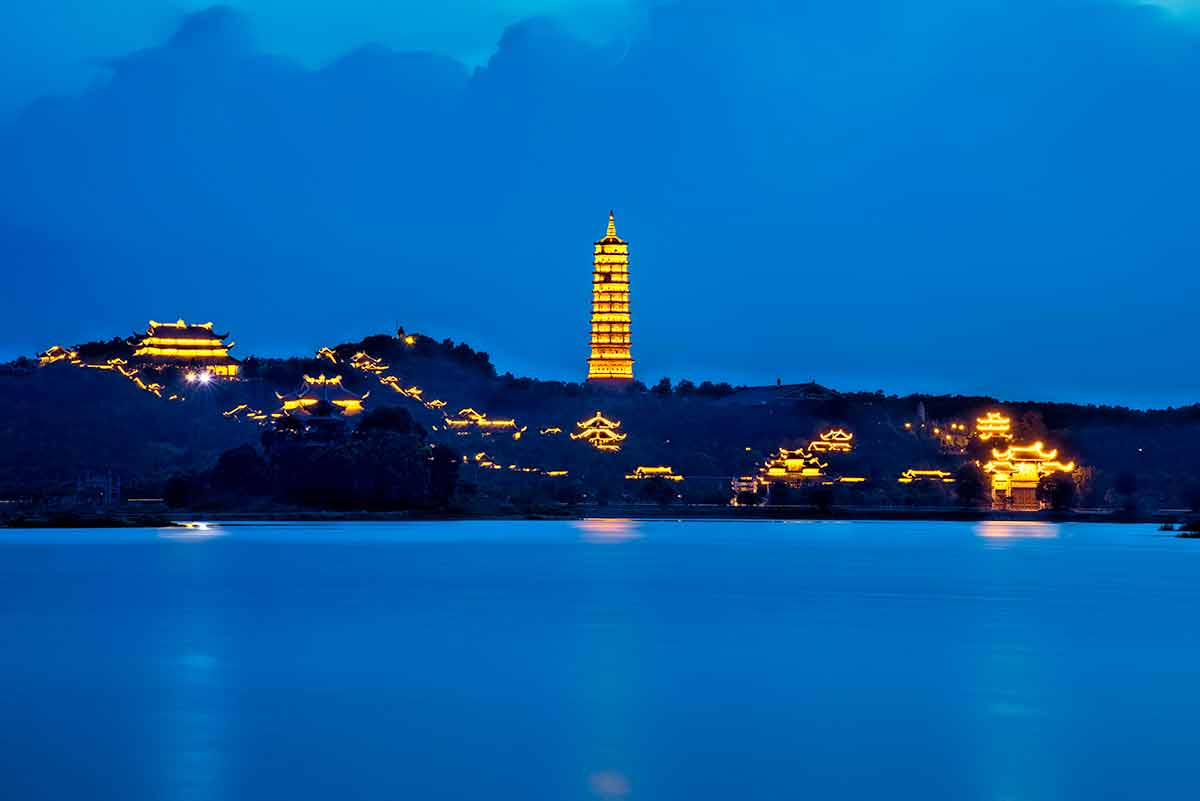
Due to a huge Buddhist influence that reverberates throughout Vietnam, there are many pagodas.
The pagodas of Vietnam are unique and distinctive.
The Perfume Pagoda is associated with a festival that happens shortly after the Vietnamese New Year and is a pilgrimage destination to pray and welcome wealth and prosperity or whether you will have a boy or a girl.
You don’t need to travel far to get to the One Pillar Pagoda if you are in Hanoi as it is within the city and showcases the prominence of Buddhism in Vietnam’s history.
Bai Dinh Pagoda is a collection of temples within a compound and Thein Mu Pagoda is in the old city of Hue and is a large pagoda with seven stories.
15- Tet Nguyen Dan (Vietnamese New Year)
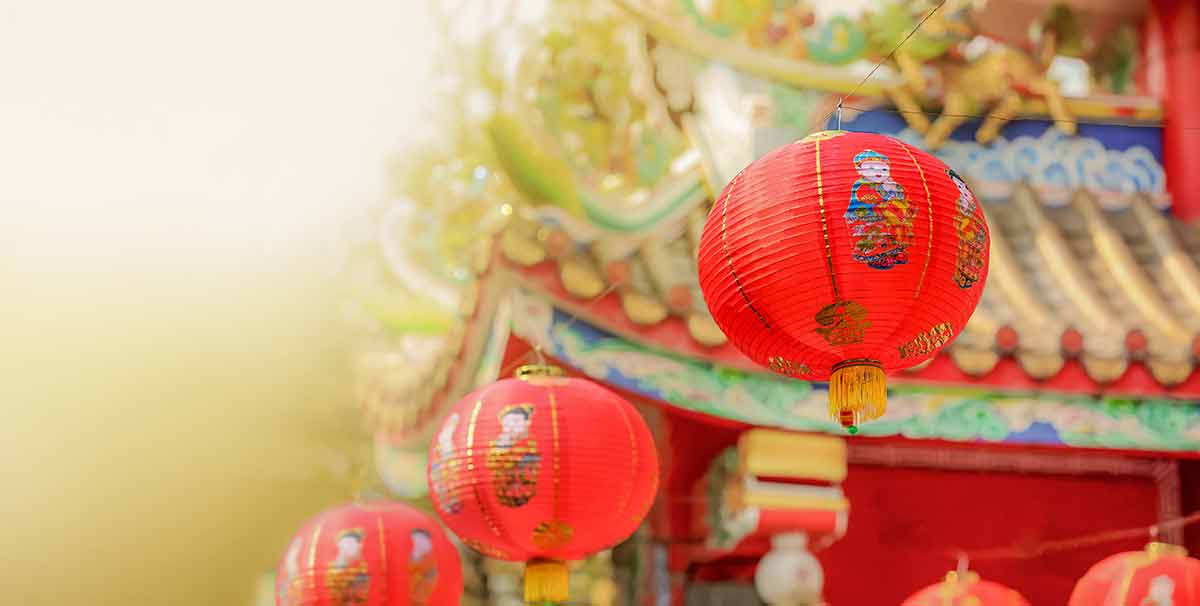
While the official date typically changes from year to year, it happens sometime between January and February.
It is meant to signify the arrival of Spring and is a massive event for the Vietnamese people, the biggest event of the year.
There’s a host of traditions and customs, such as not sweeping during the period to avoid sweeping away luck.
Those who enter the home first during the New Year holds a lot of significance.
Be prepared to see a lot of red and yellow everywhere as those are the prosperous colors.
You can expect many Vietnamese to travel back to their homes to spend this special time their families.
You may also be interested in:
- What is Turkey known for?
- What is Portugal known for?
- What is Greece known for?
- What is France known for?
- What is Belgium known for?
- What is Switzerland known for?
- What is Poland known for?
- What is Australia known for?
- What is Mexico known for?
- What is Germany known for?
- What is Croatia known for?
- What is Hungary known for?
- What Is Romania known for?
- What is The Netherlands known for?
- What is Scotland known for?
- What is Canada known for?
- What is Japan known for?
- What is China known for?
- What is Singapore known for?
- What is Vietnam known for?
- What is Thailand known for?
- What is Cuba known for?
- What is Argentina known for?
- What is Colombia known for?
- What is Spain known for?
- What is Italy known for?
- What is Ireland known for?
- What is Oregon known for?
- What is Colorado known for?
- What is Tennessee known for?
- What is Hawaii known for?
- What is Alabama known for?
- What is Illinois known for?
- What is Mississippi known for?
- What is Nevada known for?
- What is Maine known for?
- What is Idaho known for?
- What is Delaware known for?
- What is Maryland known for?
- What is Wisconsin known for?
- What is Miami known for?
- What is Virginia known for?
- What is West Virginia known for?
- What is Massachusetts known for?
- What is Boston known for?
- What is Florida known for?
- What is Kentucky known for?
- What is Indiana known for?
- What is Montana known for?
- What is Nebraska known for?
- What is Pennsylvania known for?
- What is Vermont known for?
- What is Arizona known for?
- What is California known for?
- What is South Carolina known for?
- What is North Carolina known for?
- What is Texas known for?
- What is Michigan known for?
- What is Ohio known for?
- What is Louisiana known for?
- What is Oklahoma known for?
- What is New York known for?
- What is Georgia known for?
- What is Utah known for?
- What is Connecticut known for?
- What is Rhode Island known for?
- What is Iowa known for?
- What Is Minnesota known for?
- What is New Hampshire known for?
- What is Arkansas known for?
- What is New Jersey known for?
- What is Missouri known for?
- What is North Dakota known for?
- What is South Dakota known for?
- What is Wyoming known for?
- What is Alaska known for?
- What is Washington known for?
- What is Seattle known for?
- What is New Mexico known for?
- What is Kansas known for?
- What is San Francisco known for?
- What is Chicago known for?
- What is Denmark known for?
- What is Norway known for?
- What is Sweden known for?
Plan Your Trip

Rent A Car – Find the best car rental rates at Discover Cars. They compare car hire companies to provide you with the best deal right now.

Find A Hotel – If you’re curious about this article and are looking for somewhere to stay, take a look at these amazing hotels.
